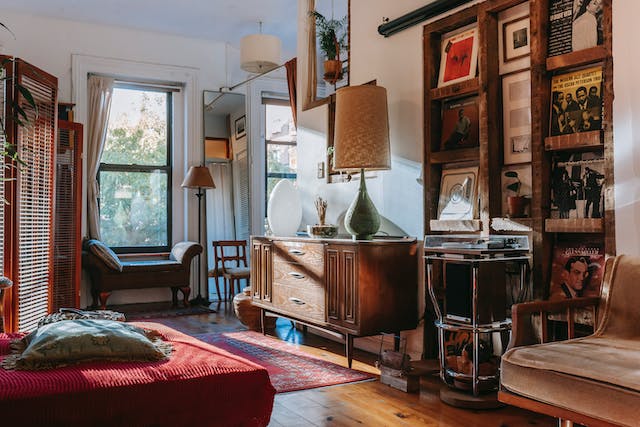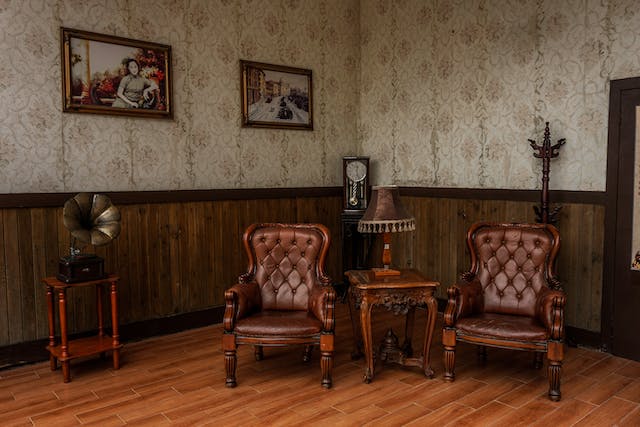Are you curious about how furniture has transformed over time? Brace yourself for a journey through the ages as we delve into the intriguing evolution of furniture. From the humble designs of the Neolithic period to the opulent creations of the Renaissance and beyond, witness the remarkable changes that have shaped our living spaces.
Explore the influences, innovations, and cultural shifts that have created the furniture we know today. Get ready to discover the captivating story behind the pieces that fill our homes.
The Evolution of Furniture Through the Ages
Neolithic Period
In the Neolithic period, there were dressers and cupboards in ancient Orkney, Scotland, for storage purposes. Skara Brae, located in Orkney, revealed fascinating stone furniture that provides insight into the people’s lives during that time.
Due to the lack of wood in this area, the inhabitants of Skara Brae were compelled to construct their furniture using stone, a readily available material. Each house has stone furniture, including cupboards, dressers, beds, shelves, and stone seats.
Of all these pieces, the stone dresser held the most significance. Positioned facing the entrance of each house, it served as a symbolic centrepiece, the first item that greeted visitors as they entered.
The stone dressers and cupboards in Orkney were just the beginning of the evolution of furniture through the ages. We’ll explore further in the subsequent section about the classical world.
The Classical World
Did you know that early humans weren’t all that different from us in terms of furniture? At first, they just piled a few rocks together to make a table or chair. But soon enough, they had furniture that wouldn’t look out of place in our homes today.
The ancient Egyptians were really into their furniture, and luckily for us, their conservation efforts mean we know a lot about their tastes. They had chairs, tables, beds, and even sofas, but they were a lot less comfy and a lot more rigid than ours today. Generally, these fancy furnishings were for the wealthy, while most Egyptians had just a couple of simple pieces.
In ancient Greece, people often preferred to recline on chaise lounges while eating instead of sitting at a standard dining table. Their furniture was similar to the Egyptians’ at first, with straight lines and sculptural elements, but later, they developed their style with more curves and flowing designs.
The ancient Chinese were the first to invent furniture that sat directly on the floor with floor mats, which is pretty cool. They also had long, narrow tables specifically used for holding instruments.
Their woodworking style relied heavily on bamboo and frame and panel construction, but not much else is known about their early furniture design.
Medieval Period
The furniture of the medieval period was highly distinctive in style, with its most notable characteristic being the intricate wood carvings that adorned the borders of chairs and canopy beds.
The structural layouts of the furniture were often garish and lacked any curved lines or circular forms. The color palettes were also limited, with shades of grey, beige, and black being the most common.
As you imagine yourself in a medieval setting, surrounded by this unique furniture, you may find it interesting to know that the forms of the furniture were mainly square or rectangular, adding to the overall simplistic and utilitarian feel.
The dark wood used in constructing these pieces, along with the elaborate embellishments, further emphasized the medieval aesthetic. In a time of difficulty and necessity, most people had only basic furniture such as chairs, stools, benches, and primitive chests.
However, as the medieval period progressed, new types of fixtures, like cupboards and desks, started to appear.
Renaissance Period
When you dive into the furniture of the Renaissance period, you’ll find a fascinating shift from sombre and plain designs to luxurious, vibrant, and gold-adorned pieces inspired by the Greco-Roman tradition.
It was a time when artisans started looking to the world around them for inspiration. And hey, upholstered furniture even made its debut during this trendsetting era.
The furniture designs of this time veered away from the medieval style and embraced extravagant, gilded designs teeming with floral, vegetal, and swirling decorations.
18th-Century
In the 18th Century, you’ll see a shift in furniture design towards elegance, symmetry, and intricate details. During this time, two prominent design movements emerged: Rococo and Colonial.
The Rococo movement, known for its ornate and opulent style, incorporated influences from the ongoing art revolutions and exploration of the new world. Furniture in the Rococo style featured delicate pastel colours and lightwoods, giving a soft and airy feel. Cabriole table and chair legs, shaped like an S, added an organic touch to objects.
On the other hand, the furnishings of early Colonial America focused more on functionality rather than style. Rejecting the ornate design elements of previous periods, Colonial furniture was easily movable and showcased influences from England through its dark wood tones and rigid shapes. S-shaped tables, desks, and chair legs were commonly seen in Colonial furniture.
19th-Century
If you were living in the 19th Century, you’d have seen a rise in Gothic furniture styles and intricate designs on chairs used by the wealthy. The Industrial Revolution brought about major changes in society during this time.
As cities grew with an increasing working population, a new class of wealthy individuals emerged as buyers of furniture. With the advent of mass production and the decline of individual craftsmen, furniture styles that had evolved over previous centuries were replaced by imitation or revival styles.
During the 19th Century, there was a proliferation of revival styles such as Gothic Revival, Neoclassicism, and Rococo Revival. These styles were effortless and inexpensive to manufacture using mass-production technology.
As a result, furniture of this era was characterized by excessive ornamentation, which took the form of applied metal or wood carvings, inlays, or stencils.
If you had the opportunity to explore the furniture of the 19th Century, you’d have noticed the following:
- Chairs with intricate cut-out designs: These chairs were often used by the wealthy at dinners and featured delicate and ornate patterns carved into the wood.
- Gothic furniture styles: The Gothic style was trendy during this period, with designs inspired by medieval architecture and decorative motifs.
20th-Century
When you delve into 20th-century furnishings, something fascinating happens. The excessive ornamentation takes a backseat, and instead, you’ll find a focus on sleek and geometric designs that are seriously eye-catching.
One standout design style from this era is Bauhaus, a German movement that was all about fearlessly experimenting and using geometric shapes. Take the iconic Brno Chair, for example.
It completely gave the traditional four-legged design the boot in favour of a single C-shaped bar for support. Talk about a bold move! This shift towards simplicity and functionality was evident in many other furnishings of the time, too.
But Bauhaus wasn’t the only player in town. Another significant influence in 20th-century design was Art Deco. This style originated in France and drew inspiration from Art Nouveau.
Now, Art Deco had a very different vibe compared to the minimalistic approach of Bauhaus. It was all about intricate designs, vibrant colors, and luxurious textures. Think opulence and grandeur.
Frequently Asked Questions (FAQs)
What were the most common materials used for furniture during the Neolithic period?
During the Neolithic Period, the most common materials used for furniture were stone and wood. Stone furniture was prominent in areas where wood was scarce, such as Orkney, Scotland. Excavations in the village of Skara Brae in Orkney have revealed unique stone furniture that was readily available and quickly worked into functional items for household use.
What is the oldest type of furniture?
The origins of furniture design go way back, reaching as far as ancient civilizations—the earliest known examples of furniture date back to ancient Egypt and the Neolithic period. Back in the day, Egyptians had quite a range of furniture like stools, tables, chests and beds – usually carved from wood and jazzed up with pretty detailed carvings and inlays. While it is difficult to pinpoint one specific type of furniture as the absolute oldest, these early examples from ancient civilizations provide insights into the beginnings of furniture design and craftsmanship.
What is the difference between modern furniture and old furniture?
Modern furniture typically features clean lines, minimal ornamentation, and a focus on functionality. It often embraces simplicity and aims to create an uncluttered and streamlined aesthetic. In contrast, old furniture designs, especially from historical periods, tend to be more elaborate, ornate, and rich in detail. These designs often emphasize craftsmanship and intricate carvings.

From the simple designs of the Neolithic era to the luxurious Renaissance period, each period has brought its unique style and innovation. But the evolution of furniture doesn’t end there. In today’s world of endless possibilities, we can’t help but feel excited for what’s to come. With new technology and materials, the sky’s the limit for furniture design. Imagine furniture that adapts to our needs, using sensors and artificial intelligence to create personalized comfort and convenience.
So, next time you’re relaxing in your modern-day sanctuary, remember that the evolution of furniture is still going strong. Who knows what exciting designs the future holds?







I see this article on the evolution of furniture through the ages incredibly enlightening and inspiring. It beautifully traces the transformation of furniture styles and materials, showcasing how cultural and technological shifts have influenced design trends. The detailed descriptions and historical context provided a deeper understanding of how design principles have evolved over time. This is a must-read for anyone passionate about interior design and furniture history. It definitely sparked some creative ideas for my future projects. Excellent article!